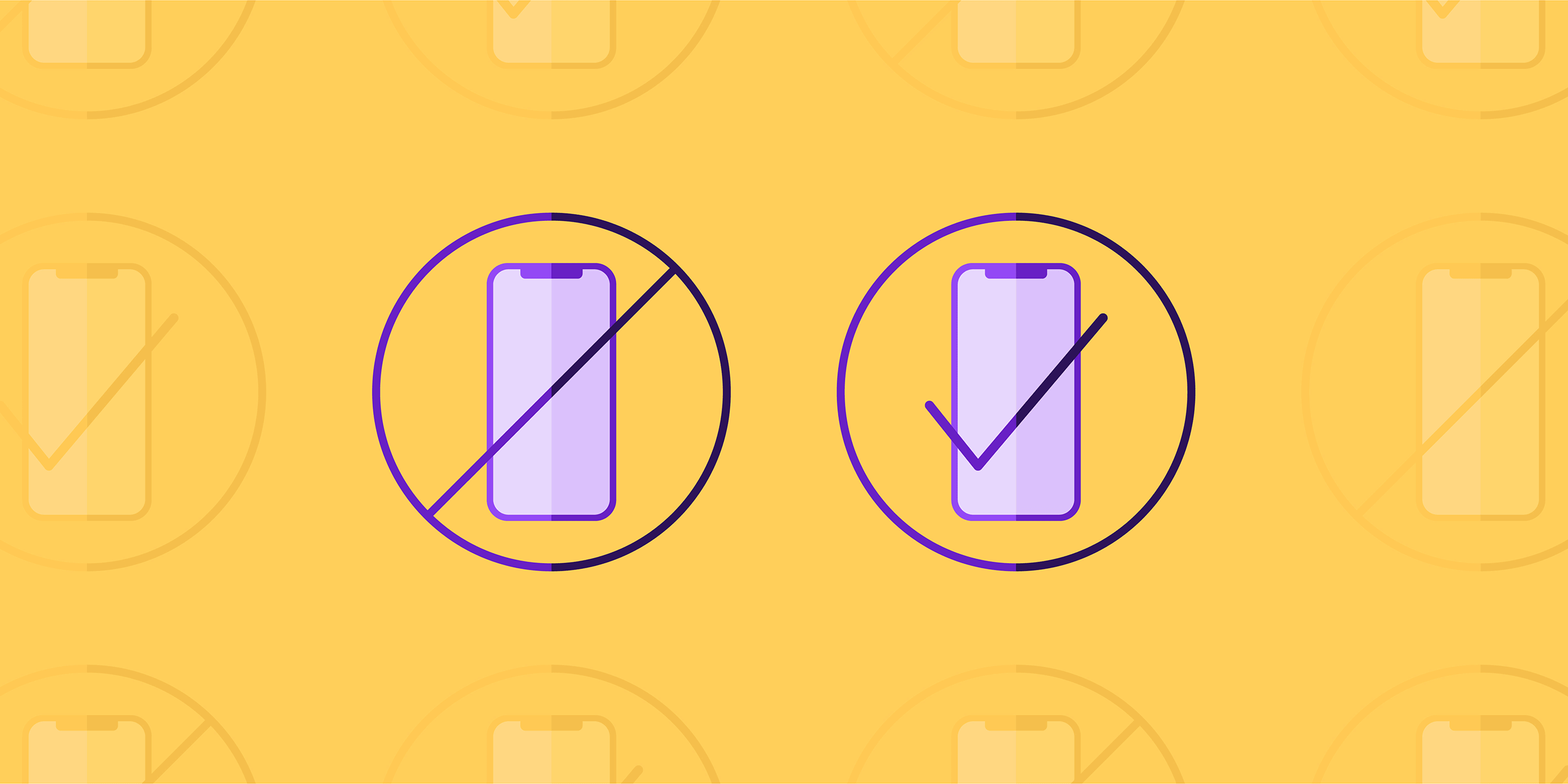Should cellphones be allowed in school? College students are going to bring their cellphones to class no matter what you do. As a teacher, you might think you have to try to ban them. Or, perhaps you could ignore the problem and hope it goes away. But cellphones are part of every modern student’s life. Instead of opting to ban or ignore them you can harness the power of cellphones. And by getting your class to use them as part of their learning, you can turn this obstacle into a win for your students.
2. Cellphones in school: The statistics
3. Cellphones in school: What researchers and educators say
4. Pros and cons of cellphones in school
Introduction
Allowing students to use their cellphones in the classroom is a controversial topic. Some instructors (and universities) ban the devices from class—or, at the very least, closely monitor their usage.
There are several arguments for this move. Students could be distracted, or spend more time playing video games or texting friends than paying attention in class. But it’s a losing battle to ban them as school policy. Students don’t like to be separated from their cellphones.
On the flip side, cellphones are being used to teach, making lessons more engaging and interactive. Rather than banning them, some teachers are looking at ways of incorporating cell phones into their curriculum to provide a better learning environment.
Clearly, technology is required when learning outside of the classroom, particularly for remote learning or flipped classrooms. But physically, in school, the vast majority of students want to use their smartphone for academic purposes.
Cellphones in school—statistics from our student survey
In November 2017, we surveyed 520 students across the U.S. in our Student Pulse survey, covering textbooks, technology and teaching. Among the findings:
- 75% of students feel that digital devices help them learn more effectively
- 94% of students want to use cellphones in school for academic purposes
- 41% of students have used Google on their cellphones to find answers to classroom questions
Students have already found ways of using cellphones in school for academic purposes, even if their instructor isn’t integrating technology into lessons. Students are also using their cellphones in the classroom to access digital textbooks and, most commonly, to take photos of lecture slides.
But there are other ways they could be using them. Students said they’d be also willing to use their cellphones to answer in-class polls, access a professor’s slides and even take an exam.
Some students are already using digital textbooks in class using their cellphones, while others are open to that option.
There are some students who don’t want to use their cell phones in school for academic purposes. Not many, though: only six percent. The majority feel digital devices help them to learn more effectively.
How can that happen? Through active learning, where students are taught and led to recall information through action, rather than passive listening. Active learning can help combat the Pulpit Problem, where students have trouble absorbing concepts if they’re not actively building their own connections.
Cellphones have made the practice of active learning much more straightforward to manage. Apps and student engagement platforms help. Classroom quizzes, discussions and other active learning ideas can all be executed on a mobile device. And, as previously mentioned, many students say that they are willing to use their devices for this.
Furthermore, not only can teachers use these tactics in the class, they can also often be embedded within the pages of digital textbooks.
Most of today’s college freshmen are younger than Google and researched their first school project on Wikipedia. From the viewpoint of administrators looking to recruit students and offer a better learning experience, incorporating smartphones into the curriculum through active learning and participation could be a major selling point for courses.
Cellphones in school: What researchers and educators say
Studies say that cellphones and other mobile devices can significantly enrich learning, so long as they’re mindfully added to the classroom. (Such as through active learning, as described above.)
Robert Shuter, founder of The Center for Intercultural New Media Research, explains. “Mobile devices can significantly enrich learning, according to myriad studies, as long as instructors carefully integrate them into their teaching and judiciously monitor their use.”
For students, cellphones in the college classroom should be reclassified as learning, not distraction, devices.
“Positive uses of strategic redirection have a greater chance of successfully managing these devices than more heavy-handed techniques because they’re in sync with the digital attitudes of today’s students,” Shuter adds.
Rather than battling over smartphones in the classroom, he says instructors and universities “need to change their negative digital mindsets and embrace mobile devices as powerful instructional tools, with the potential to revolutionize teaching and learning.”
Matthew Numer is assistant professor in the School of Health and Human Performance at Dalhousie University. In the Chronicle of Higher Education, he argues that banning technology—including laptops—from the classroom is “treating adults like infants… it’s my responsibility as an educator to ensure that my lecture is compelling. If my students aren’t paying attention, if they’re distracted, that’s on me. The same goes for anyone presiding over a business meeting.”
“In addition to using them for active learning techniques, some professors encourage students to use them in class to conduct research through social media. These technologies promote collaboration and make it easier.”
Pros and cons of cellphones in school
Pro: Cellphones can enrich learning if incorporated into class
Pro: Most students are already using cellphones to learn, take notes and answer questions
Pro: Cellphones can be used as research tools in some subjects
Pro: Using digital devices in class can be an effective way of attracting students to your course.
Con: If you allow cellphones in class but don’t include them in your lesson, you’ll have to be interesting enough to compete with them
Con: Cellphone use in school should be monitored to make sure students aren’t distracted from their lessons.
Conclusion
To conclude, if you’re getting ready to choose whether cellphones belong in your classroom, embrace them positively—and prepare to put in the work to do it well.
There are several good examples to follow for all disciplines. For instance, business and vocational schools incorporate digital devices into their lessons because their graduating students would be expected to use them immediately in their daily careers.
Is your course material due for an update? You can incorporate cellphones and active learning at the same time by introducing a digital textbook that is available on students’ devices, as this biology professor did. And another history prof noticed that students were using Wikipedia to answer his classroom questions—so he built a rival.
But if you are concerned about the effect of cellphones on classroom discipline and distraction, there is help. Download our free e-book, designed to give you some practical tools, by filling in the form below.
Related stories
Some well-known teaching problems and solutions
Pros and cons of technology in the classroom


